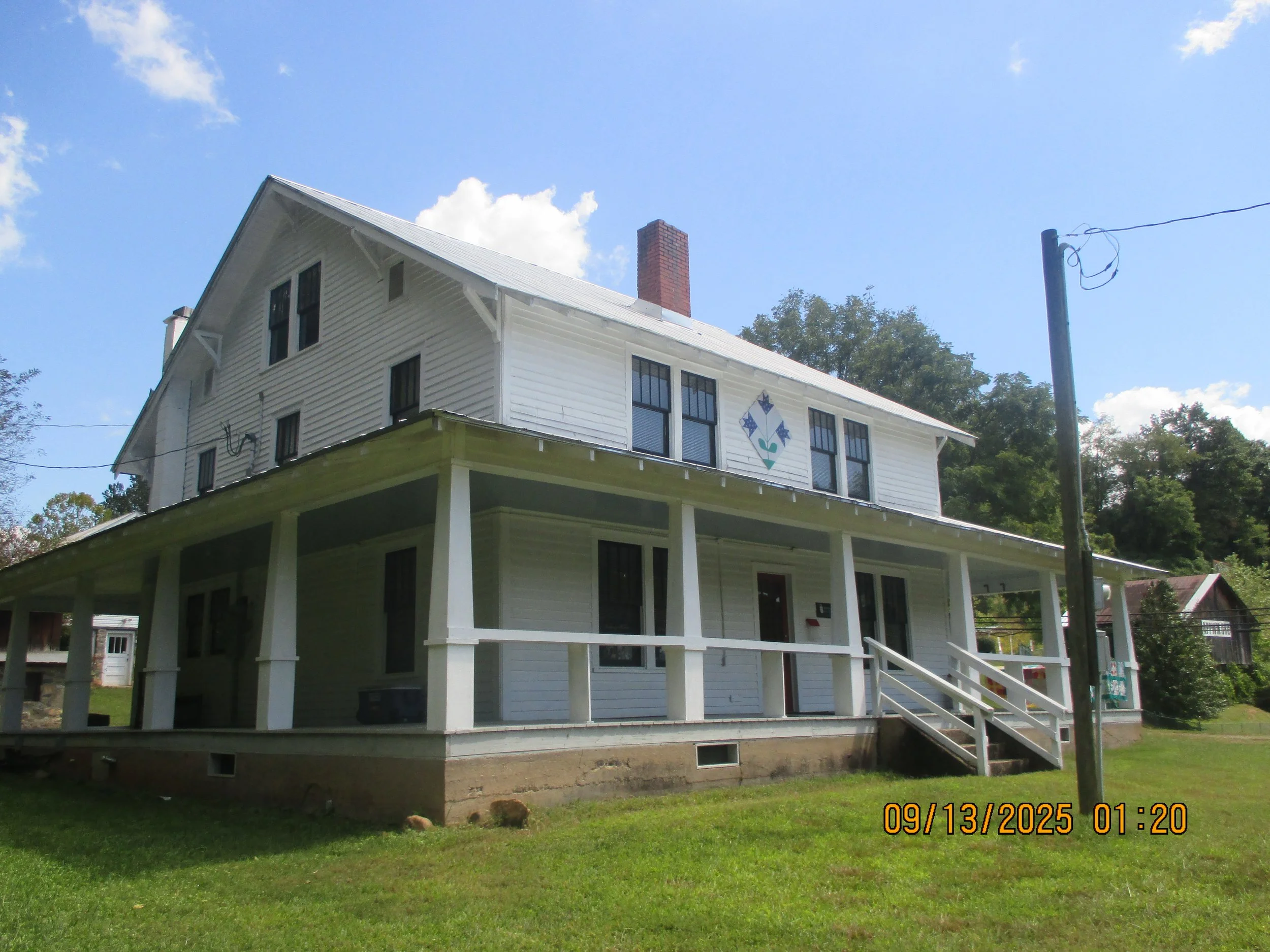Whose labor built the national parks that represent our beloved Appalachian landscape?
An aerial image of CCC camp 441 near the now-defunct Smokemont, NC, located nearby modern day Cherokee. This camp was behind the restoration of Mingus Mill and the creation of the Mountain Farm Museum, both located near the Oconoluftee Visitor’s Center.
Image courtesy of Southern Appalachian Digital Collections.
By Remy Cox
Tourism has been a cornerstone of industry in North Carolina for over a century, and western North Carolina is at the center. Dozens of towns in the part of the state that the Appalachian Mountains runs through rely on the income brought into the region by the millions of tourists that come through the state every year—early advertising materials predating the park’s existence claim that half of the United States’ population was within a single day’s travel of the Great Smoky Mountains National Park (GSMNP), which are split evenly between eastern Tennessee and western North Carolina, and this rings truer today with improved road infrastructure.[i] However, this now-booming industry would not be possible without the New Deal, President Franklin D. Roosevelts answer to the problems presented by the Great Depression, and the thousands of young men in their late teens to mid-twenties who were saved from destitution by their membership in the Civilian Conservation Corps.
The Civilian Conservation Corps (CCC) was a public service that filled a devastating gap in a nation pestilent with financial and ecological strife. Much of their work was ecological, largely based around forestry protection and conservation, flood and erosion control, transportation infrastructure, wildlife conservation, and recreational development.[ii] Soil erosion was a matter of great concern, and efforts to address it were intertwined with the discussions of how to provide work relief to young American men.[iii] Increasing rates of soil erosion degraded the fertility of farmland, and to allow it to continue would surely see the nation faced with an agricultural crisis alongside its existing strife.[iv] CCC camps were a vital institution overlaid with a military façade, as enrollees lived in barracks and ate in mess halls reminiscent of domestic military installations, although they were not actually affiliated with the military, and recruits chose to enroll for the material benefits. However, not every part of CCC life was a shining symbol of American perseverance and grit, as just like most places of American life during Jim Crow, CCC camps were segregated, and the lives of Black men in the CCC were restrictive and rampant with discriminating practices.
Panoramic image of company 1459 near Sevierville, Tennessee.
Image courtesy of Southern Appalachian Digital Collections.
Nevertheless, much of modern Appalachian infrastructure was created because of the public works projects and agencies that FDR created to help Americans survive the Great Depression, the CCC chief among them. It’s hard to explore the GSMNP or other public lands in western North Carolina and eastern Tennessee without coming upon plaques or badges commemorating the work of the Civilian Conservation Corps, although there is some contention over where former CCC camps were located as the record-keeping could be poor.[v] Considering that the park was officially founded barely a year after the creation of the CCC, it’s no surprise that the infrastructure of the GSMNP was dependent on the work of CCC enrollees.[vi] Everything from major landmarks like bridges, vast networks of hiking trails, to work on major trails like sections of the Appalachian Trail, were created and maintained by the CCC. CCC work shaped close to all the trails, roadways, and other resources available to visitors in Appalachian national parks. Although obviously this infrastructure has been maintained by other organizations since the CCC’s dissolution, the foundational structures were built by the CCC, and the ecological preservation of the land itself is owed to the forestry and soil preservation they prioritized.
One of the many roads constructed during the lifetime of the CCC.
Image courtesy of Southern Appalachian Digital Collections.
In just over 9 years of operation, The Civilian Conservation Corps “…was responsible for planting more than 2 billion trees, slowing soil erosion on 40 million acres of farmland, and developing 800 new state parks.” Furthermore, “…conservative estimates indicate that Corps work projects across the United States altered more than 118 million acres, an area larger than the state of California.”[vii] The creation of the GSMNP became a major tourism draw for a region that was historically impoverished. Like the TVA and rural electrification, the CCC was a New Deal idea that completely reshaped the Appalachian region forever, especially the Great Smoky Mountains, and arguably saved the lives of the thousands of young men who enrolled to support themselves and their families.
Although the CCC was an ephemeral agency, limited by the circumstances of the time it was created and by the rapid onset of the second World War, it’s impact rippled throughout the nation and created new opportunities in the lives of Appalachian families.
Image courtesy of Southern Appalachian Digital Collections.
[i] Great Smoky Mountains National Park/Land of the Everlasting Hills, 1927, https://southernappalachiandigitalcollections.org/object/20333
[ii] Harley E. Jolley, “That Magnificent Army of Youth and Peace”: The Civilian Conservation Corps in North Caroline, 1933- 1942 (Raleigh: North Carolina Department of Cultural Resources, 2007), 59.
[iii] Sarah T. Philips, This Land, This Nation: Conservation, Rural America, and the New Deal (Cambridge: Cambridge University Press, 2007), 78.
[iv] Neil M. Maher, Nature’s New Deal: The Civilian Conservation Corps and the Roots of the American Environmental Movement (New York: Oxford University Press, 2008), 126.
[v] Charlotte Pyle, CCC Camps in Great Smoky Mountains National Park (April 1979).
[vi] https://www.nps.gov/grsm/faqs.htm
[vii] Neil M. Maher, Nature’s New Deal, 43-44.

















